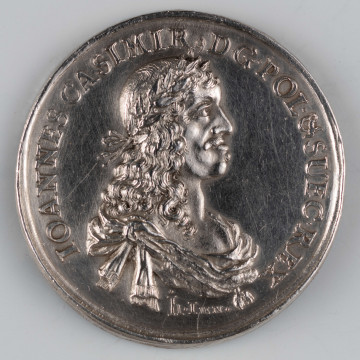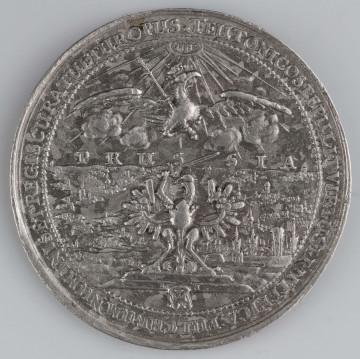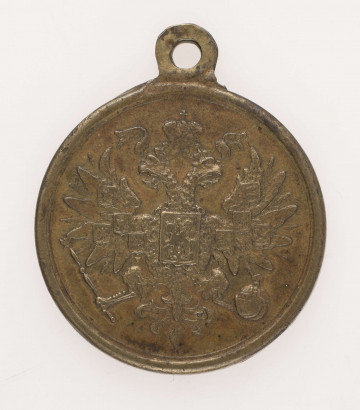
Peace in Oliva in 1660
1660
National Museum in Lublin
Part of the collection: Polish medallic art.
The reign of three successive rulers from the Vasa dynasty on the Polish throne was a period of increased interest in the art of medal-making, which was most manifested by the reigning monarchs. In the case of Sigismund III, it is known that he did not focus on ordering medals from artists, but the King also made attempts to create them himself. Unfortunately, it is impossible to assess how successful they were, as none of his works has survived to our times, not even in the form of an image. Significantly, the liking for medals was not only present at the royal court. It was undoubtedly fostered by the presence of local artists. Admittedly, there were not many of them, as throughout the 17th century one can speak of only a few medal makers connected with Poland. One of them was Jan Höhn, called the Younger. He inherited not only his father's name, but also his talent. He was born around 1642 in Gdańsk, and he connected his life with the city until the end of his life. He was the author of numerous medals, initially made together with his father, and later independently. Following the example of Jan Höhn the Elder, he documented the most significant events of the reign of John Casimir, Michał Korybut Wiśniowiecki and, above all, John III Sobieski. Apart from that, he made medals for famous personalities. Among his clients there was the Elector of Brandenburg Frederick William I, called the Great Elector; he portrayed John Hevelius or an extremely controversial Lutheran preacher, but at the same time a prominent philosopher, Aegidius Strauch.
The presented object is also the work of Johann Höhn the Younger. It was created as a posthumous medal in memory of Prince Bogusław Radziwiłł, the negative hero of Henryk Sienkiewicz's Potop [The Deluge]. The medal is not the most outstanding work of Jan Höhn, but it well reflects the specific character of the medallic art of the period, which was fond of symbolism. On the obverse, the artist placed the bust of Prince Bogusław, while the reverse features three allegorical depictions of the most vital events related to the presented figure. They are depicted by obelisks with the dates 1620, 1665 and 1669. Even for those unfamiliar with the Prince's biography, they become clear thanks to the obelisks' finials - a radiant sun, a pair of doves and a corpse skull, symbolising his birth, marriage to his cousin Anna Maria Radziwiłłówna, and death.
Leszek Poniewozik
Author / creator
Dimensions
cały obiekt: width: 40,8 mm
Object type
medal
Technique
cast
Material
lead
Creation time / dating
Creation / finding place
Owner
The National Museum in Lublin
Identification number
Location / status

1660
National Museum in Lublin

1654
National Museum in Lublin

National Museum in Lublin
DISCOVER this TOPIC
National Museum in Lublin
DISCOVER this PATH
Educational path